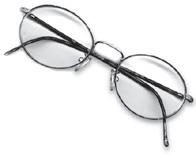




























Freezing temperatures, icy roads and snowy landscapes are the norm for Bozeman in the wintertime, particularly January and February. While it can be tempting to stay home and crank

• Galentine’s Day Treats and Art Night: As popularized by the sitcom “Parks and Recreation,” Galentine’s Day is a pseudoholiday in which women are encouraged to celebrate the female friendships and relationships in their lives.
Bozeman’s The Painted Pot is inviting women of all ages to spend the evening celebrating this special day on both Jan. 17 and Feb. 3. The event will feature a dessert bar and gift. All participants will also have
the chance to pick and work on their art project, whether pottery painting, glass fusing or acrylics on a canvas. Tickets are available at https://placefull. com/galentine-s-day-event-at-thepainted-pot and cost $15 (not including one’s project).
• Live Theater: intermountain Opera Bozeman will present Stephen Sondheim and James Lapine’s “Into the Woods” this February. The musical follows the intertwining adventures of classic
up the heat until spring, there are plenty of activities both indoor and outdoor over the next month, many of which offer discounts specifically for seniors.
fairy tale characters. Regular performances run Feb. 4-5 and 10-12 at the Ellen Theatre. A special catered gala performance will take place on Feb. 3. Tickets can be purchased at www. intermountainopera.org, with discounts available for students and first-time Intermountain Opera production ticket buyers.
• Boots n Buckles Ball: The Livingston Roundup’s annual fundraiser will be held on Saturday, February 11 at the
Livingston Civic Center. The night will include food, music, music and a live auction. Ticketing information is not yet available.
• Concerts at The Elm: Bozeman’s newest music venue has a full lineup this winter. Upcoming acts include Kitchen Dwellers, Big Richard, Magic City Hippies, Margo Price and more. Tickets, dates and more information can be found at https://logjampresents.com.
• Moonlight Skiing and Snowshoeing: The US Forest Service is leading a free moonlight skiing or snowshoeing event, complete with a bonfire, hot cocoa and s’mores at Rendezvous Ski Trails on Feb. 3 and March 10 starting at 6 p.m. for those willing to make the trek to West Yellowstone area. For more information please contact the Hebgen Lake Ranger District at 406-823-6961. Guests should bring their own skis or snowshoes, warm clothes and a headlamp.
• Cross-country skiing at Crosscut Mountain: Crosscut Mountain Sports Center: A short drive from Bozeman, in the mountains Crosscut is a non-profit with a mission to connect people to nature. In the winter, they offer a wide variety of cross-country ski trails, as well as lessons and rentals. In an effort to allow retirees to enjoy their trails, Crosscut offers Senior and even further reduced Super Senior (for 80-year-old and older guests) tickets and season passes, which can be viewed at crosscutmt.org.
“We are delighted each year that so many older members of our community invest in passes to Crosscut,” Chief Marketing Officer Laurie Stahle said. “We have approximately 140 70-year-old [and older] season pass holders.”

Stahle said that the activity has many perks, especially for seniors, and it can be less intense on one’s body downhill skiing.
“There are myriad mental and physical benefits of Nordic skiing for everyone,” she said. “Obviously, there are cardiovascular and
muscular benefits to both classic and skate skiing, and we see many community members who spent decades downhill skiing switch to Nordic skiing as they get older as it’s low impact for aging joints. Additionally, we see so many psychological benefits to spending time outdoors and engaging with our community on the trail.”
• Downhill skiing at Bridger Bowl: Bozeman’s closest downhill ski resort is a staple winter destination for many in the community. Like Crosscut, they welcome seniors and don’t want skiing to be a financial burden for them, offering Senior (for those ages 70-79) and inexpensive Super Senior (80+) deals on day tickets and passes.
“It is especially wonderful for seniors to get outdoors and recreate with both family and friends. The camaraderie within the skiing community is like no other,” Marketing and Communication Director Erin O’Connor said.” Friendships are developed over chairlift rides, enjoying an activity no matter one’s ability and these friendships last a lifetime
According to O’Connor, so far this season they’ve sold 628 Senior Midweek Passes, 338 full season senior passes and 238 Super Senior
passes, in addition to day tickets. More information and sales can be found at https://bridgerbowl. com/.



“For months I was in so much pain I couldn’ t move . One week after my back surgery I was back to li ving my life like nothing had happened.
"I often forget I've had a total hip
I would highly recommend
Last October, when it was warm and sunny outside, I told my brother and his wife that I was planning to drive over for a winter visit. They live in Kent, Washington, which is 675 miles from Bozeman. But they’re all interstate highway miles. Easy peasy. And I love road trips!
Several days later, it snowed. And that afternoon, my AWD
Nissan slid through the Kagy and South 19th Avenue intersection after I tried to stop when the light turned red. The street was a glare of ice.
My slow-motion slide through the intersection was like a bad dream. My heart pounded as I careened (at 10 miles an hour) around vehicles, concrete meridians, and pedestrians. Thankfully, I missed hitting everything and everyone. But, by the time I was half a block
west of 19th and had steered my Nissan into a snowbank to stop it, I was panting and cursing. Suddenly, my drive to Kent didn’t seem like a good idea.
There are three mountain passes between Bozeman and Kent: Pipestone Pass, Lookout Pass and Snoqualmie Pass. I’ve driven them all many times and have never considered canceling a road trip just because it was winter. No matter the weather, I’ve always gone where I wanted

to go.
My reluctance for winter travel was something new— an unfamiliar feeling of vulnerability that included local driving. For a while, I seriously considered staying inside my condo until April. I could order groceries from Instacart and emergency supplies from Amazon. I could keep in touch with friends via phone calls and Zoom. I could be safe at home.
Although I’ve since scrapped

Chérie Newman
Osher Lifelong Learning Institute “OLLI” at MSU http://www.montana.edu/olli/

Tele: 406-994-6550
MSU Academic Technology and Outreach 128 Barnard Hall • P O Box 173860 Montana State University Bozeman, MT 59717-3860




the idea of staying inside until April, I now understand that navigating the winter months can be much more dangerous than sliding through an intersection. The actual danger is isolation. When it’s cold and icy outside, leaving home can feel unsafe, especially when walkways and roads are slippery. And so, we often stay in when we should get out.
According to the Centers for Disease Control and Prevention’s website, isolation is hazardous to your health. They cite a risk of premature death that rivals smoking, obesity and physical inactivity. Also, they report a 50% increased risk of dementia, a 29% increased risk of heart disease and a 32% increased risk of stroke.One study showed that “loneliness was associated with higher rates of depression, anxiety and suicide.”
Those statistics show that staying inside all winter is a terrible idea. So, how can we get out safely?
Luckily, in Bozeman, we have many options.
Galavan: Anyone over 60 can schedule transportation through Galavan. A driver will take you to medical appointments, the grocery store, social events or personal errands. Before you ride, you’ll need to fill out an intake form and schedule by 3 p.m. the day before you need to
go. You can call 406-587-4486 to speak with a scheduler.
Streamline buses: The zero-fare transit system, Streamline, may be an option if you live near a bus stop. Of course, you’ll need an ice-free walkway to get to the bus stop. You can download the bus app to your phone, showing you when the bus is scheduled to arrive at your stop. The app will show you if a bus is running late, so you won’t have to stand out in the cold longer than necessary. A dispatcher at the number above can help you with both Galavan and Streamline schedules.
Ride-share companies: These include services such as Uber, Lyft and taxis. Yes, you will have to download an app and learn how it works. Consider it exercise for your brain. You’ll also have to enter your credit card information online. But, once you get used to how it all works, this can be a very liberating way to travel. A driver shows up at your door, and off you go. The app will tell you exactly when your ride will arrive and allow you to schedule a return trip.
Family, friends and neighbors: People like to help! You might be surprised at how happy they’ll be to give you a ride. Ask someone attending the same event, such as an OLLI class, or who likes to shop at your grocery store. Treat your son or
daughter to lunch after s/he drives you to do a few errands. Invite a neighbor for coffee and homemade ginger cake after he gives you a ride. Not only will these people feel good about helping, but you’ll enjoy one-onone time with them.
Make a resolution to find and nurture at least one new friendship during 2023. Resolve to connect with existing friends more often. Sign up for classes and events. Use whatever transportation you’re most comfortable with, or invite people to your place.
Although I decided not to drive over three mountain passes this winter, I’ve found a middle ground between that and hiding out until spring. Because isolation now seems more dangerous than icy roads, I have chosen to get out!

Curiosity for Life.
montana.edu/olli 406-994-6550
Cognitive health is not something to take for granted. Although a certain level of memory loss can be expected as people age, when the ability to clearly think, learn and remember is compromised, those changes can affect an individual’s ability to perform daily activities and should serve as a cause for concern.
Brain health should be a priority for everyone. The National Institute on Aging says brain health is an umbrella term that encompasses a host of factors, including:

· cognitive health, which is how well you think, learn and remember

· motor function, or how you make and control movements
· tactile function, which is how you feel sensations; and
· emotional function, or how emotions are interpreted and responded to.
Individuals can safeguard brain health - particularly cognitive health - by taking these steps.
Working with doctors, individuals can put their health first. This includes getting routine screenings, managing chronic health problems, limiting or avoiding alcohol and nicotine products, and getting the recommended amount
of sleep each night.
All chronic conditions cause longterm repercussions, but the NIA indicates that observational studies show having high blood pressure in mid-life increases the risk of cognitive decline later in life. Lowering blood pressure lowers the risk for mild cognitive impairment and possibly dementia.
Harvard Medical School says nurturing social contacts, engaging in stimulating mental activities like reading and doing puzzles, seeing new places, and learning new things can help keep the brain in top form.
Stress can take its toll on the body, and there is reason to believe that it may adversely affect cognitive health as well. Make every stride to reduce stress, whether that involves taking vacations, meditating, laughing with friends and family, or engaging in relaxing activities that relieve stress.
Vitamin D is linked to a host health benefits, including its potential to promote a healthy brain. Individuals can get more time outdoors to get vitamin D naturally from the sun and eat foods rich in vitamin D. If doctors find that vitamin D levels are


Certain hearing loss has been linked to cognitive decline, says Healthline. Researchers in Italy concluded that people with central hearing loss had a higher risk of mild cognitive impairment than those with no hearing
loss. Individuals with central hearing loss are urged to speak to their physicians to determine if they can take preventive action to stave off further decline. Cognitive health should be a priority. Adults can employ various strategies to reduce their risk of cognitive decline as they age.




peripheral

 By Jan Cashman
By Jan Cashman

The most common upright evergreen planted here is the familiar Colorado spruce, sometimes called “blue spruce.” Most true pines (Pinus) have longer, greener needles than spruce, are fast-growing and should not be overlooked for use as specimen trees in your

landscape.


There are at least 77 species of pine trees grown in U.S. nurseries. A number of them, such as Monterey pine and Mexican pinyon pine are not hardy enough for our Northern climate. Eastern white pine is native to the northeastern US. Here It may winterburn, as it needs more cloudy and humid

winters than our climate provides. Our hardy, native lodgepole pine does not make the best landscape tree because of its tall, thin shape and tendency to lose its lower branches. Other pine species, such as Ponderosa, Austrian and Scotch, thrive in our climate and make pleasing additions to
our landscape, especially during our long winter months.
specimen or in groups. Allow plenty of room for them, because, as they grow, the branches of many species have a wide spread, over 30 feet for some. Plant pines along with silvery-colored shrubs like variegated dogwood or buffaloberry for good contrast— silvery green against the pine’s dark needles.
Austrian Pine is one of the most popular pines used in landscapes because of its deep green needles, rapid growth and full, dense shape. It was introduced to the U.S. from Europe in 1759 and has been planted extensively in the northern half of the U.S. since then. The tree’s mature height is 30 to 40 feet. Unlike some other pines, Austrian keeps its branches and fullness all the way to the ground as the tree grows. They tolerate alkaline soils.
Ponderosa Pine, although not native right here in the Gallatin Valley, is the state tree of Montana. This large pine can grow to over 100 feet. Ponderosa pines grow well in tough-growing sites; they tolerate poor, alkaline soils and dry conditions. Here in the Gallatin Valley Ponderosa pines grown east of the continental divide seem to do better than those with their source west of the divide.
35 years ago we had the foresight to plant a grove of Ponderosa pines south of our house to give us a noise and
visual screening from busy Springhill Road. An added benefit is that the trees give us many big, attractive pine cones which are great for Christmas decorating.
Scotch Pine, as you might guess, is native to Northern Europe and the British Isles. At maturity, this fast-growing pine can reach 50 to 100 feet tall. Its growth habit is irregular and open, making an eerie shape. Scotch pines are often used for bonsai. The bottom branches of Scotch pines die and drop as the tree matures. Plant breeders such as Iseli Nursery in Boring, Oregon, have developed some new and unusual-shaped Scotch pines for the plant enthusiast, some tall and thin, others dwarfed and spreading. Unfortunately, during the Western pine beetle outbreak some years ago, many Scotch pine were susceptible and died.
Limber and Swiss Stone Pine are two often overlooked pine trees. The hardy native limber pine is a small, slower growing tree with an interesting shape. Swiss Stone pine, also slow-growing with an interesting shape, grows tall with a pyramidal shape. Both are resistant to winter-burn and tolerant of harsh, dry conditions.
Even the hardiest of evergreens, especially those newly planted, can experience winterburn though, where the needles turn brown and dry from winter winds and sun.
Protect your evergreens from harsh winter conditions by spraying Wiltpruf, an organic antidesiccant, on the needles in the fall or erect a shade on the southwest side by stretching burlap between posts. Deep water your pines and other evergreens in November before the ground freezes and again anytime winter weather is warm and dry. Protect from deer that like to eat on pine’s needles with fencing.

Pines provide a deep green color and interesting, architectural form in your landscape. They grow quickly. Most are hardy and easy to grow. Christmas lights work great hung on your pine tree. Plant one or a grove of them. You will be glad you did.



Afew of the fellows were noticeably late to the old guy waterhole this week. A couple of the gents had arrived promptly and were comparing new Christmas sweaters gifted by doting family members. One of the fellows had on a bright blue cardigan trimmed with a yellow collar. The other was wearing a rich maroon colored pullover.
The chap in the blue sweater gave his friend a concerned look, then reminded,”We aren’t supposed to wear maroon at the waterhole.”
His friend sheepishly replied,
“I’m pretty sure that it’s purple, not maroon. Besides, my granddaughter gave it to me. She’s only six and doesn’t know any better.”
Just then, one of the latecomers rushed in the door and wheezed up to the table. Somebody gave him a stern look, then inquired, “Was traffic heavy today?”

The straggler responded, “No, I was out looking for my wife’s cat. He ran away last night and she’s in a panic.”
Someone else inquired, “Why’d the cat run away?”
The first fellow replied, “I was taking down the Christmas tree and her cat wandered into the room. When I wasn’t looking, he ate a big red tree ornament that had fallen on the floor. It was my favorite decoration. My wife was more concerned about the cat than the ornament, but finally concluded that the bauble would pass on through. Then, in the middle of the night, we heard some frightful screeching and yowling. We haven’t seen the cat since then.”
A fellow at the end of the table inquired, “Did you get your

ornament back?”
The tree decorator responded, “Yup, although It took some special handling. It’s now in the Christmas box and ready for next year. Hopefully we’ll find the cat, and if he’s careful he might survive another year. I suspect that he’s learned to downsize any ornaments that he eats at Christmas.”
Somebody held up a cell phone and announced, “Look at what I got for Christmas— a new phone! My old phone was awkward to carry, and the shoulder strap was about to break. I was pretty

excited to find this under the tree.”
The fellow sitting next to our enthusiastic friend snatched it away, “Let me see that. I’ve been thinking about getting a new phone. How do you turn it on?”
The gent replied, “I’m not sure. The grandkids left before I could get instructions.”


The fellow holding the phone scratched his head, then passed it along to the next old guy at the table, who handed it to a third fellow. That gent found a button and the phone lit up. He passed it back to the owner.
Our Christmas phone friend peered at the screen in wonder. He held the device in the air for everyone to see, then excitedly commented, “Look at all the icons. This phone can do everything!”
Somebody pointed to an image on the upper left side of the screen, then commented, “That’s an interesting app, it’s a New Year’s resolution tracker. I’ve never seen one of those before! Open it and let’s see how it works.”
The gent holding the phone pressed his thumb on the icon. His eyes were drawn to the top of the screen. Suddenly, he gasped


and his face noticeably paled. He looked at the rest of us worriedly, then said, “My name is at the top, and my New Year’s resolutions are already filled in. How does a new phone have that information? I haven’t shared them with anybody.”
Someone asked, “What are your New Year’s resolutions?”
The gent read off the list, “I’m resolved to never drink orange juice after I brush my teeth, to quit blaming the dog for bad smells around the house and to cause another person to laugh at least once a month.”

Somebody else responded, “A bunch of old guys navigating a Christmas phone just gave you a head start on one of your New Year’s resolutions.”



You can find many ways to support charitable organizations. One method that’s gained popularity over the past few years is called a donor-advised fund. Should you consider it?


The answer depends on your individual situation, because donoradvised funds are not appropriate for everyone. However, if you’re in a position to make larger charitable gifts, you might at least want to see what this strategy has to offer. Here’s how it works:
• Contribute to the fund. You can contribute to your donor-advised fund with cash or marketable securities, which are assets that can be converted to cash quickly. If your contribution is tax deductible, you’ll get the deduction in the year you make the contribution to the fund. Of course, these contributions are still subject to IRS limits on charitable tax deductions and whether you itemize your deductions. If you typically don’t give enough each year to itemize and plan on making consistent charitable contributions, you could consider combining multiple years’ worth of planned giving into a single donor-advised fund contribution and claim a larger deduction in that year. This move may be especially impactful if you have years with a higher amount of income, with an accompanying higher tax rate. If you contribute marketable securities, like stocks and bonds, into the fund, a subsequent sale of the securities
avoids capital gains taxes, maximizing the impact of your contribution.
• Choose an investment. Typically, donor-advised funds offer several professionally managed diversified portfolios where you can place your contributions. You’ll want to consider the level of investment risk to which your fund may be exposed. And assuming all requirements are met, any investment growth is taxable to you, the donor-advised fund or the charity that ultimately receives the grant, making your charitable gift go even further.
• Choose the charities. You can choose grants for the IRS-approved charities that you want to support. You decide when you want the money donated and how it should be granted. You’re generally free to choose as many IRS-approved charitable organizations as you like. And the tax reporting is relatively easy — you don’t have to keep track of receipts from every charity you support. Instead, you can just keep the receipts from your contributions to the fund.
Although donor-advised funds clearly offer some benefits, there are important trade-offs to consider. For one thing, your contributions are irrevocable, which means once you put the money in the fund, you cannot access it for any reason other than charitable giving. And the investments you choose within your fund will carry some risk, as is true of all investments. Also, donoradvised funds do have investment management fees and other costs. So, consider the impacts of these fees when deciding how you want to give.
In any case, you should consult with your tax and financial professionals before opening a donor-advised fund. And if the fund becomes part of your estate
plans, you’ll also want to work with your legal advisor. But give this philanthropic tool some thought — it can help you do some good while also potentially benefiting your own long-term financial strategy.
This article was written by Edward Jones for use by your local Edward Jones Financial Advisor.



Edward Jones is a licensed insurance producer in all states and Washington, D.C., through Edward D. Jones & Co., L.P., and in California, New Mexico and Massachusetts through Edward Jones Insurance Agency of California, L.L.C.; Edward Jones Insurance Agency of New Mexico, L.L.C.; and Edward Jones Insurance Agency of Massachusetts, L.L.C. California Insurance License OC24309

JAN.
JAN.
JAN.
JAN.
JAN.
JAN.
JAN.
EXERCISE:
FULL BODY WORKOUT: 9:00 A.M. MONDAY & FRIDAY 9:30 P.M. TUESDAYS & THURSDAY
LINE DANCING:10:15 A.M. MONDAY YOGA: 9:00 A.M. WEDNESDAY
ZUMBA: 1:00 P.M. WEDNESDAY
SOCIAL ACTIVITIES:
PINOCHLE: 12:30 P.M. MONDAY • 10:00 A.M. WEDNESDAY
UKULELE CLASS 10:45 A.M. TUESDAY
SING ALONG 12:45 P.M. THURSDAY

NEEDLEAIRES: 9:30 A.M. FRIDAY
JAN.
JAN.
JAN.
JAN.
JAN.
FEB.
Closed for Martin Luther King, Jr. Day January Birthday Lunch/Blood Pressure Check 12:00 p.m. January 20, 2023: Cooking Class: “Say Cheese” 1:00 p.m January 26, 2023: Breakfast Club 7:00-8:30 a.m. Call the center for current information 406-388-4711
January
January 3 – Green Salad, Spaghetti and Meatballs, Italian Vegetables
January 4 – Cottage Cheese with Pineapples, Pork Chop, Mashed Potatoes and Gravy, Brussel Sprouts, Brownie Surprise
January 5 – Diced Beets, Chicken Stir Rice, Green
January 6 – Apricots Halves, Shepherd’s Pie, Cornbread, Cookie
January 9 – Sliced Apples, Sloppy Joe’s, Home Fries, Vegetable Medley, Pistachio Pudding
January 10 – Spinach Salad, Country Fried Steak, Mashed Potatoes, Zucchini
January 11 – Pea Salad, Meatloaf, New Potatoes, Carrots, Cherry Jell-O Dessert
January 12 – Sliced Peaches, Chicken Enchiladas, Spanish Rice
January 13 – Beef Stroganoff, Noodles, Steamed Vegetables, Tapioca Pudding
January 16 – Closed for Martin Luther King Jr. Day
January 17 – Caesar Salad, Chili, Baked Potato with Trimmings
January 18 – Hard Boiled Egg, Shrimp Salad, Roll, Dessert
January 19 – Cucumber Salad, Roast Beef, Mashed Potatoes with Gravy, Broccoli
January 20 – Cranberry Jell-O, Chicken Salad Sandwich, Potato Salad, Ice Cream with Strawberry Topping
January 23 – Fruit Cup, Sweet and Sour Pork, Rice, Oriental Vegetables, Almond Poppy Seed Cake
January 24 – Frog Eye Salad, Glazed Ham Sweet Potatoes, Green Bean Casserole
January 25 – Sliced Apple, Fish Taco, Cherry Crisp
January 26 – Jell-O, Teriyaki Chicken, Asian Noodles, Oriental Vegetables
January 27 – Green Salad, Burger Steak, Mashed Potatoes with Gravy, Broccoli, Lemon Mousse
January 30 – Green Salad, Baked Salmon, Lemon Pepper Rice, Steamed Vegetables, Lemon Bars
January 31 – Green Salad, Chicken Parmesan with Spaghetti, Spinach
Allergy statement for all Meals-On-Wheels foods: Menu items may contain or come into contact with WHEAT, EGGS, PEANUTS, TREE NUTS, FISH, SHELLFISH, SOYBEANS, and MILK. Meals are now being served at the Bozeman Senior Center.
• Bozeman Senior Center will be closed December 23 and 26 for Christmas
• The Board meeting is held on the third Friday of each month at 10:00 a.m.
• Christmas Store – Monday – Friday 10:00 a.m. - 2:00 p.m.
• Bozeman Senior Center’s Second Hand Rose is open on Monday - Friday 9:00
a.m. - 3:00 p.m.
• The Book Store is open Monday – Friday 9:00 a.m. - 3:00p.m.
• These dates and times are subject to change dependent upon volunteer and staff availability.
• Please call 586-2421 to be sure before you come to the center to shop!
Travel with the Bozeman Senior Center
807 North Tracy• Bozeman, Mt. 59715 • 1-406-586-2421 e-mail: 14judymorrill@gmail.com
We have opportunities for you to travel within the United States in 2023. These trips are open to Bozeman Senior Center current members. Check the travel kiosk in the lobby of the Bozeman Senior Center to pick up travel brochures.
DAY TRIPS:
SNOWCOACH TRIP INTO YELLOWSTONE PARK: MARCH 1-2, 2023
This trip is definite, and the flyer is in the travel kiosk at the Bozeman Senior Center front desk. Pick up the flyer and get signed up for this great trip to see all the splendor of Yellowstone Park in the winter. You will spend one night at the Holiday Inn in West Yellowstone as part of the trip cost. The snowcoaches you will be riding in are wonderful. They have huge windows, comfortable seats and a driver, who is also your guide.
Please get your name on the list at the Senior Center front desk and pay the full cost of the trip at that time. You must be signed up and paid by February 13, 2023.
GREAT NEWS: The brochures for the Nashville and Smoky Mountains Holiday trip for 2023 are here. Stop by the Senior Center travel kiosk and pick one up. The registration forms are attached, so fill it out along with your deposit payment and leave it at the front desk for Judy. She will get your registration processed and you will definitely have a space on the trip. For all of you who put your names on the interested list, your space will not be held until you get in your registration form and deposit.
Travel throughout 2023: The trips to Costa Rica, New Orleans, Japan, Canyonlands, Alaska and Ireland are all full or past the sign up deadlines.
Travel for 2024: There will be a slide presentation on Friday, Jan. 6 at 11:00 a.m. in the Senior Center basement meeting room. Slides will be shown on trips planned for 2024 to South Africa in March or April, and one to Spain and Portugal in the fall of 2024. Everyone is welcome.
Happy New Year, and plan to come travel with the Bozeman Senior Center.
January 4 – Green Salad, Lasagna, Italian Vegetables, Garlic Bread, Cake
January 6 – Green Salad, Fried Steak, Mashed Potatoes, Green Beans, Brownie
January 11 – Green Salad, Grilled Ham and Cheese, Tater Tots, Macaroni and Cheese, Cake
January 13 – Green Salad, Chicken Fajitas, Rice, Refried Beans, Brownie
January 18 – Green Salad, Pulled Pork, Beans, Tater Tots, Cake
January 20 – Green Salad, Baked Ham, Cheesy Potatoes, Asparagus, Brownie
January 25 – Green Salad, Chicken, Cacciatore, Mixed Vegetables, Cake
January 27 – Green Salad, Burger and Hot Dog, Beans, Tater Tots, Brownie
JAN.
JAN.
JAN.
JAN.
JAN.
JAN.
JAN.
JAN. 18
JAN. 19
JAN. 24
JAN.
JAN.
JAN.
FITNESS CLASSES
ALL EXERCISE CLASSES ARE HELD IN THE FITNESS ROOM WITH THE EXCEPTION OF LINE DANCING (Dining Room)
STRONG PEOPLE (Tues, Thurs 1:00 p.m.)
Strength building class focuses on increasing bone density and muscle mass. Class follows accepted protocol for people with bone loss. Participants work at their own level increasing weights as they build strength. Each class also includes exercises to strengthen the core and finishes with stretching. All are welcome and weights are provided.
STRENGTH TRAINING WITH VICKI (Mon, Wed 8:30 a.m.)
A great class for men and women looking to increase muscle mass and overall body strength. Body weight, dumbbells, leg weights, and bands are all incorporated into a full body workout. Strength training doesn’t have to be intimidating; drop in for a class and see how much fun you can
have getting stronger. Just bring a water bottle.
AEROBICS WITH RINA DONALDSON (Mon, Wed 9:30 a.m.)
This is a full hour’s workout. We do 35 minutes of cardio (which can vary in intensity depending on your own ability). After that we do 10 minutes of targeted weight lifting and 15 minutes of stretching. Come join this dynamic workout!
CORE ON THE FLOOR WITH RINA (Mon,Wed 10:35 a.m.)
Pilates inspired. Gentle mat work and stretching.
YOGA AND BALANCE WITH MELANIE SIMMERMAN (Mon, Wed 1:00 p.m.)
Yoga is based on classic Hatha Yoga poses and appropriate for all levels. Focus is on physical, mental and spiritual balance as we practice poses that challenge and enhance posture and balance, strength and flexibility. Balance focuses on strength and
flexibility to gain and improve good posture and balance.
CARDIO AND WEIGHTS WITH PRISCILLA (Friday, 9:00 a.m.)
Rapid-fire exercise using upper and lower body plus core for strength, balance and flexibility. For cardiorespiratory strength and endurance.
BEGINNERS LINE DANCING (Tuesdays & Thursdays 10:00 to 10:45 a.m.)
Beginning line dancing is a fun form of exercise with physical, mental, emotional and social benefits. Learn and practice common line dance steps. Then dance to a variety of music including rock, Latin, country and waltz. Beginners who have no prior dance experience of any kind are encouraged to arrive 15 minutes early on their first day for some preinstruction.
INTERMEDIATE/ADVANCED LINE DANCING (Tuesdays & Thursdays 10:45 to 11:30 a.m.)
More complex and challenging dances will be taught and danced. Experienced dancers are invited to participate in this class.
INTERMEDIATE/ADVANCED LINE DANCING (Friday at 10:00 a.m. to 11:30 a.m.) More complex and challenging dances will be taught and danced. Experienced dancers are invited to participate in this class.
ENLIGHTENMENT TAI CHI FORM WITH VALERIE (Thursday at 11:00 a.m.)
Tai Chi is a graceful form of exercise characterized by slow, methodical, gentle movements and deep breathing exercises that are low impact, relaxing and somewhat aerobic. People of almost any age and fitness level can participate. In this class you will be learning the Enlightenment Tai Chi Form, some other easy short forms, warm-up and deep breathing exercises and Tai Chi positions. Tai Chi can be a positive part of an overall approach to improving and maintaining your health.
MONDAY: 9:30 a.m. Wood Carvers, 1 p.m. Duplicate Bridge and 1 p.m. Hand & Foot Canasta
TUESDAY: 1 p.m. Bingo, 1 p.m. Cribbage
WEDNESDAY: 9:30 a.m. Watercolor, 12:30 p.m. Ukulele, 12:45 p.m. Rubber Bridge, and 1 p.m. Mah Jongg and Pinochle
THURSDAY: 10 a.m. Fly Tying, 10 a.m.-2:00 p.m. Foot Clinic (must make an appointment. Cost is $20.00), 11 a.m. Scrabble, 1 p.m. Bingo and 1 p.m. Pinochle
FRIDAY: 12:45 p.m. Duplicate Bridge, 1 p.m. Rubber Bridge and 1 p.m. Find a Friend Circle


SPECIAL EVENTS; January 31, 2023, 10 a.m.-12 p.m., Stepping Up, Must come 7 weeks in a row, Must sign up at the Bozeman Senior Center
Bozeman Health Deaconess Hospital is very excited to partner with the Bozeman Senior Center to offer the Stepping Up program. This is a 7-week course to help build confidence and reduce falls. Falls in the older adult population are a major factor in causing a serious and often permanent decline in quality of life for the
individual. This 7-week course is a great way to assess your risk of falling, reduce any risks you identify, meet others who feel the same way and learn skills and information to help improve your balance, strength and walking skills. We will meet at the Senior Center every Tuesday for 2 hours from 10 a.m. to 12 p.m. This is a free class with limited participant numbers. The Senior Center will have a signup sheet and cap the course at 14 participants. We will run the course with as few as four individuals. This course is participatory in nature. It is designed to be interactive, social and presented in a way that provides a safe and fun environment to get together with folks and learn how to reduce the chance of having a fall.
To be eligible, you must be able to ambulate (even with assistive devices) on your own, not in an immediate stage of recovering from a surgery. We recommend this course to any senior, but especially to you if you have a history of falling or a strong fear of falling. Please plan to attend all 7 sessions since each session builds on the previous one. You don’t need to bring anything but an open mind, good attitude, and desire to make some small changes in your life. Look forward to working with you.
If you have any specific questions, please reach out via phone or email.
Cheers, Allison Hugus & Mark Sherkenney • Bozeman Health Injury Prevention and Trauma Program
Ahugus@bozemanhealth.org • 406-414-5836
There are other events in the planning. Read the newsletter for more events.